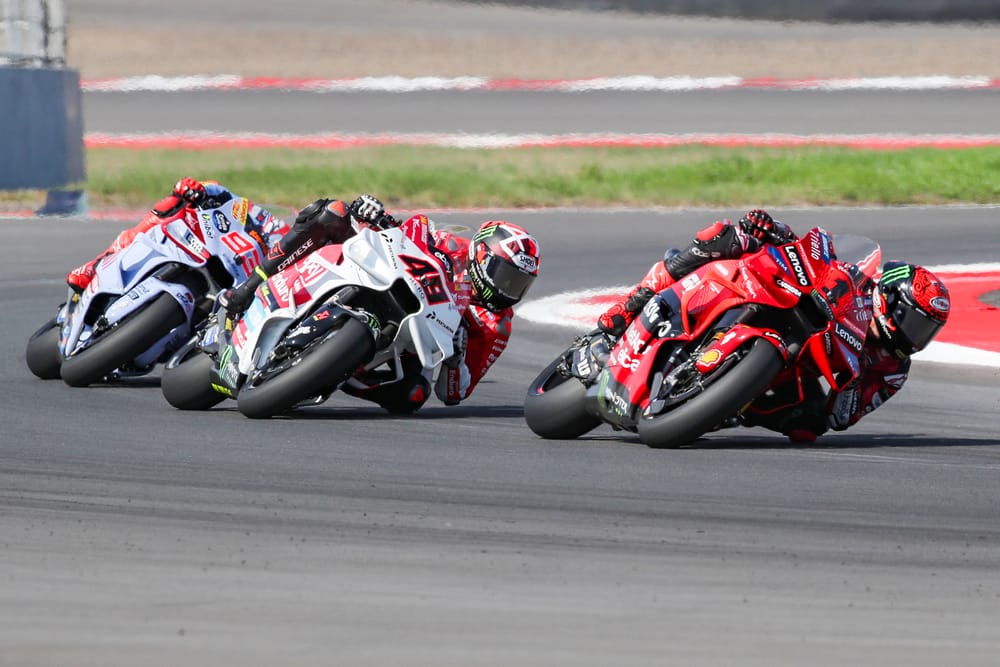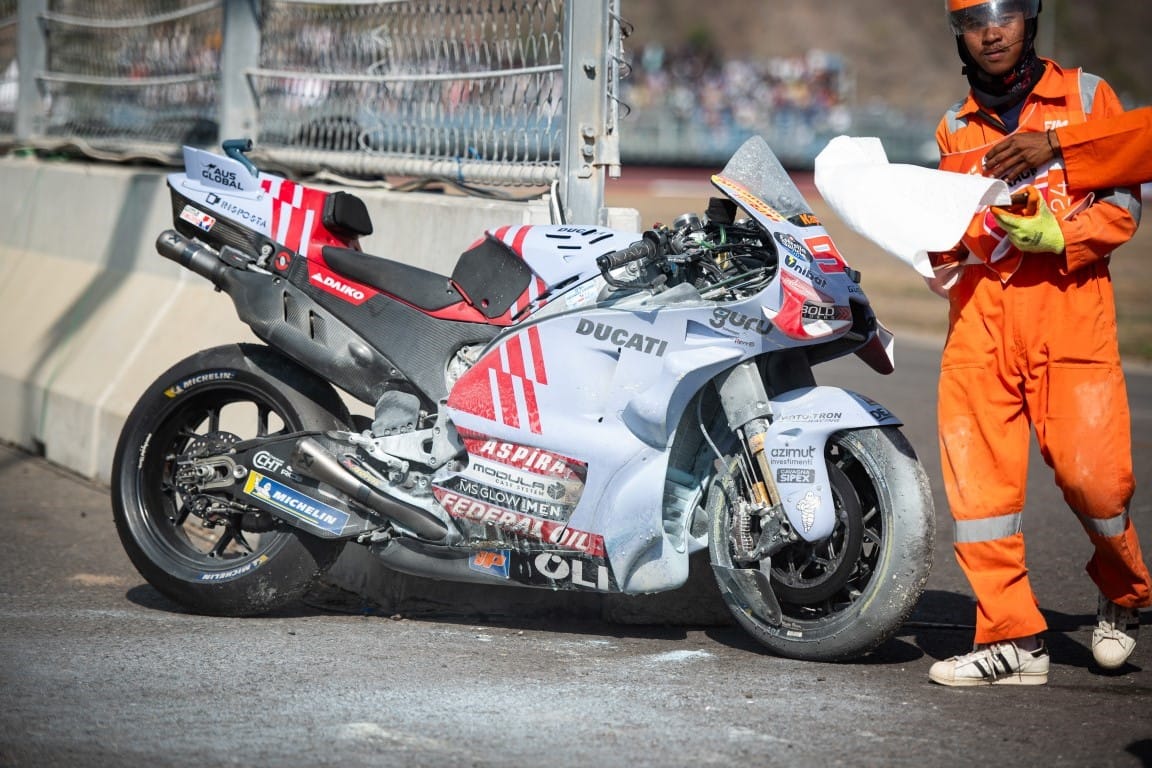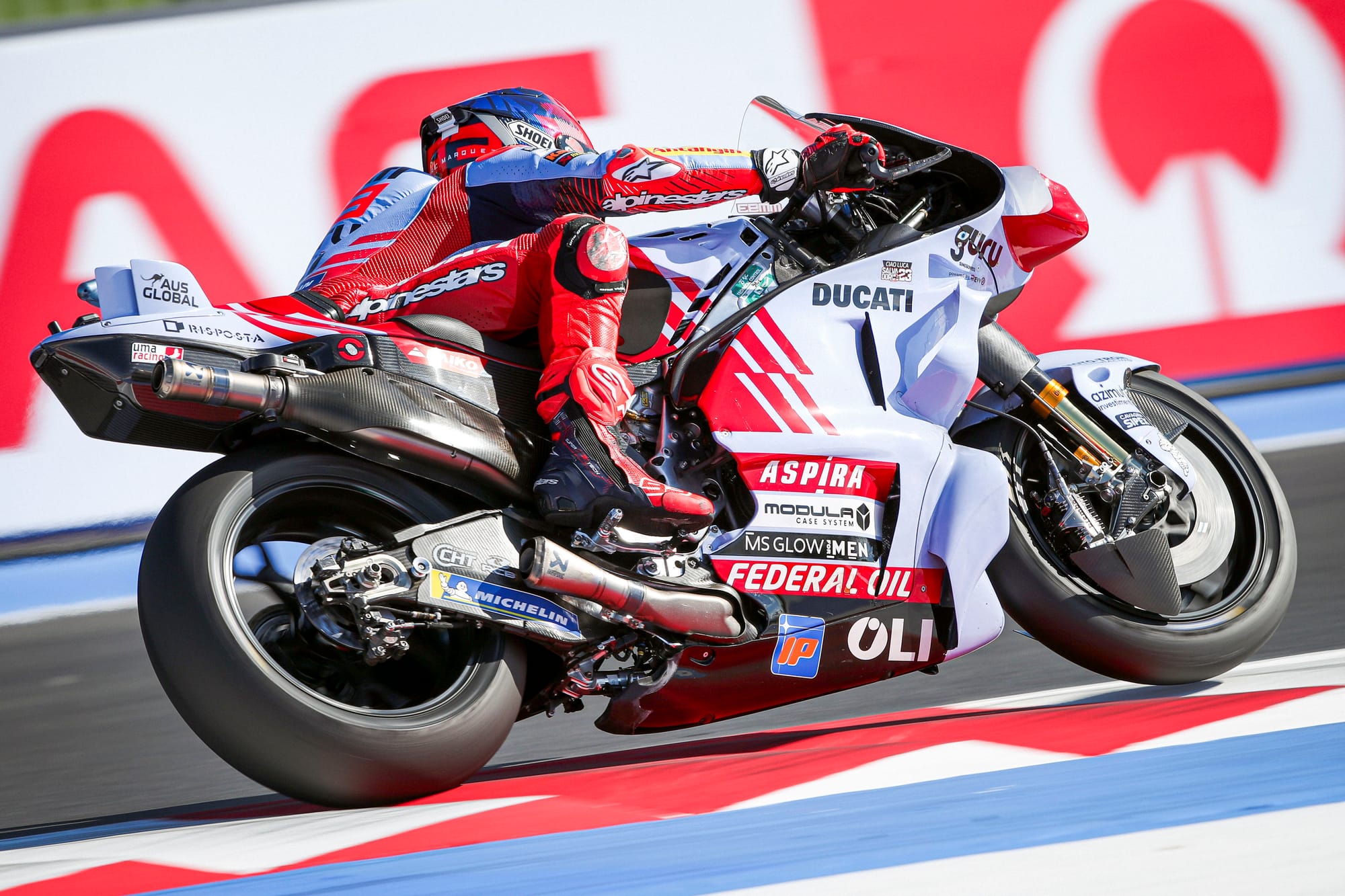Ducati's MotoGP world champion Pecco Bagnaia insists its newest bike, the GP24, isn't a wholesale upgrade on last year's version. So why hasn't the fight been closer?
Bagnaia and main adversary Jorge Martin, who currently leads the standings, have monopolised this year's MotoGP battle, with Marc Marquez's title challenge on a 2023-spec bike effectively over after a Mandalika failure - but already a long shot well before that given his bike has appeared to be consistently outperformed by the newer version.
There's reasonable evidence that even a year-old Ducati remains better than anything the factory's rivals have mustered up but, unlike last year where the GP22s were a credible threat to the GP23s more often than not, this year things have been decidedly more one-sided.
Treating those bikes as two separate manufacturers' entries would give you a manufacturers' title classification as follows:
- Ducati GP24 - 517 points
- Ducati GP23 - 337 points
- KTM - 263 points
- Aprilia - 247 points
- Yamaha - 93 points
- Honda - 51 points
And this may well undersell the change that's happened, given the lion's share of the GP23 points belongs to Marquez, who was not with Ducati last year.
"It depends on the [track] layout," said Marquez's brother Alex when asked about the GP24/23 gap this year.
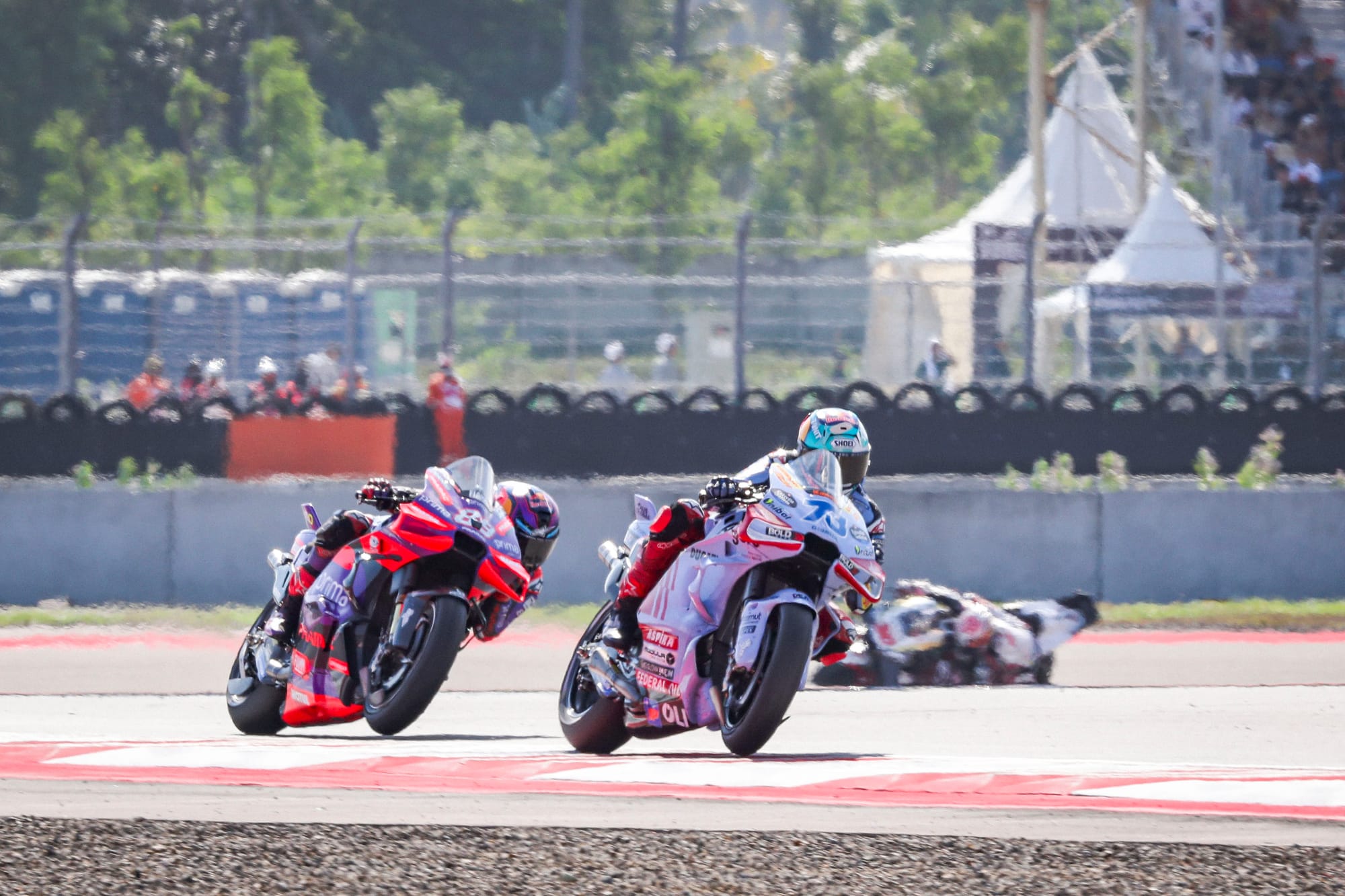
"The '24 looks like it has really strong points, it depends on the layout, if they can use them more or less. Fast tracks like Silverstone - Misano also but Silverstone especially - they were one step forward clearly, no? But then it also depends a lot on the grip level on the track.
"Because for example Aragon is really fast, the aerodynamic side is really important [so the GP24s should be ahead] but they were not able to make the difference there because the grip level was really low.
"It depends on many things, if they can extract the strong points or not."
Aragon aside - where Marquez's natural affinity for the track and between-sessions rain having a consistent impact on the freshly-repaved surface - 2024 has not really presented a weekend where the GP23s were conclusively as good as the GP24s, much less better.
The GP24 riders, however, have reliably maintained that the gap between the two specs is not as big as is often suggested - and at Mandalika, Bagnaia repeatedly pointed out that he had a much easier time working his way past the GP24 of Franco Morbidelli than the GP23 of Marco Bezzecchi on Sunday, because of traction on corner exit.
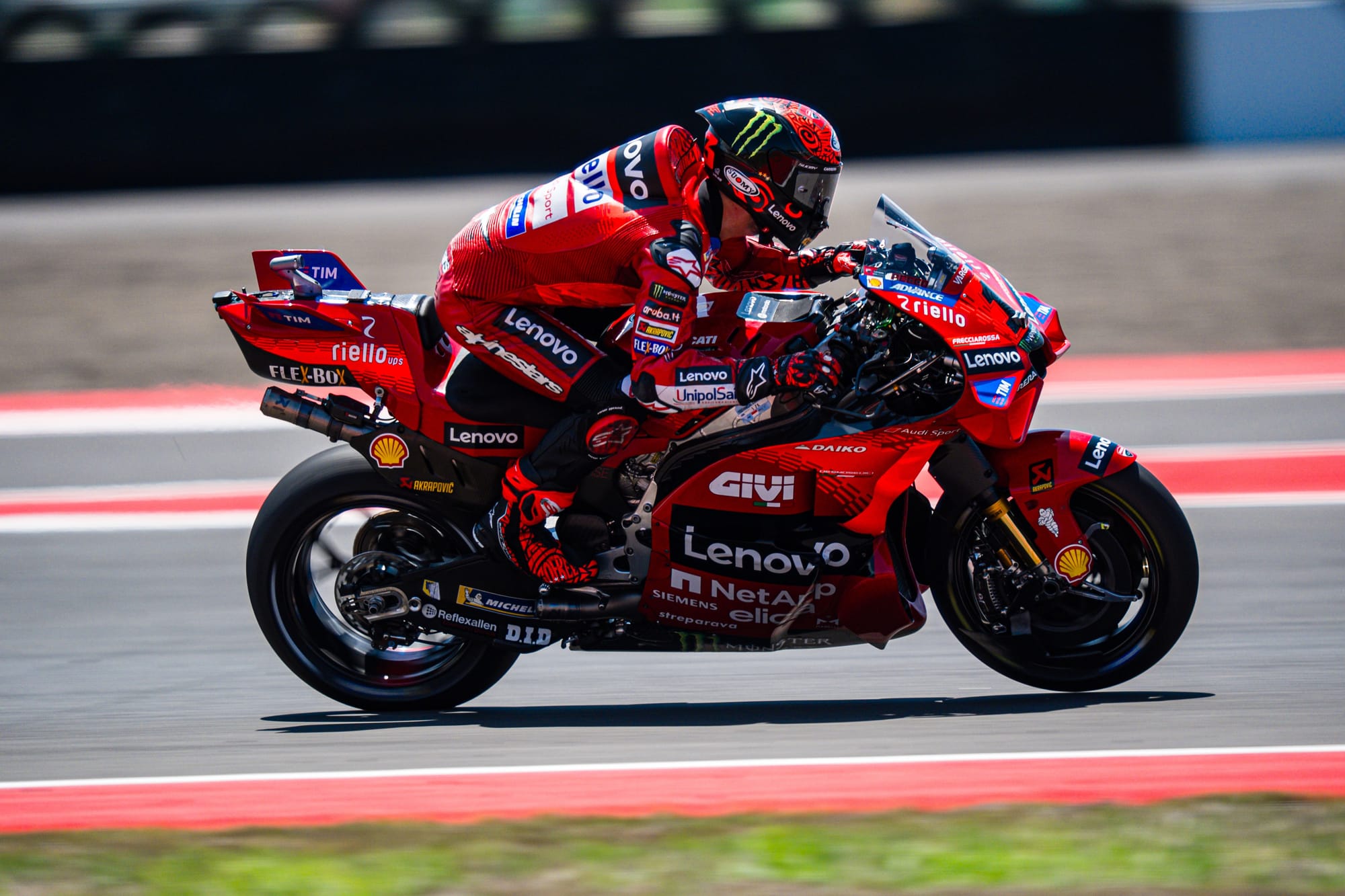
"What I've been saying from the start of the season is the GP23 has more traction than our bike," he insisted.
"In this kind of circuit it's affecting the acceleration more - because the rear grip is not too high, and in that first part of acceleration the GP23 has a bit more.
"I'm not saying it's a big step but it's a little step that can help."
"It's true," concurred Bagnaia's good friend Bezzecchi - before going into an extensive answer for why this hasn't been enough for the GP23s to put up a stronger fight.
"The traction on [corner] entry is a big problem for us. [The GP24] is better in stopping and turning. And then in [corner exit] traction for sure they have something less.
"But when we have a new tyre, also in the front, especially in the front, we can manage to try to stay with them in the entry, then in the exit maybe we gain something - but then when the front grip drops, we are destroyed. And they are fantastic.
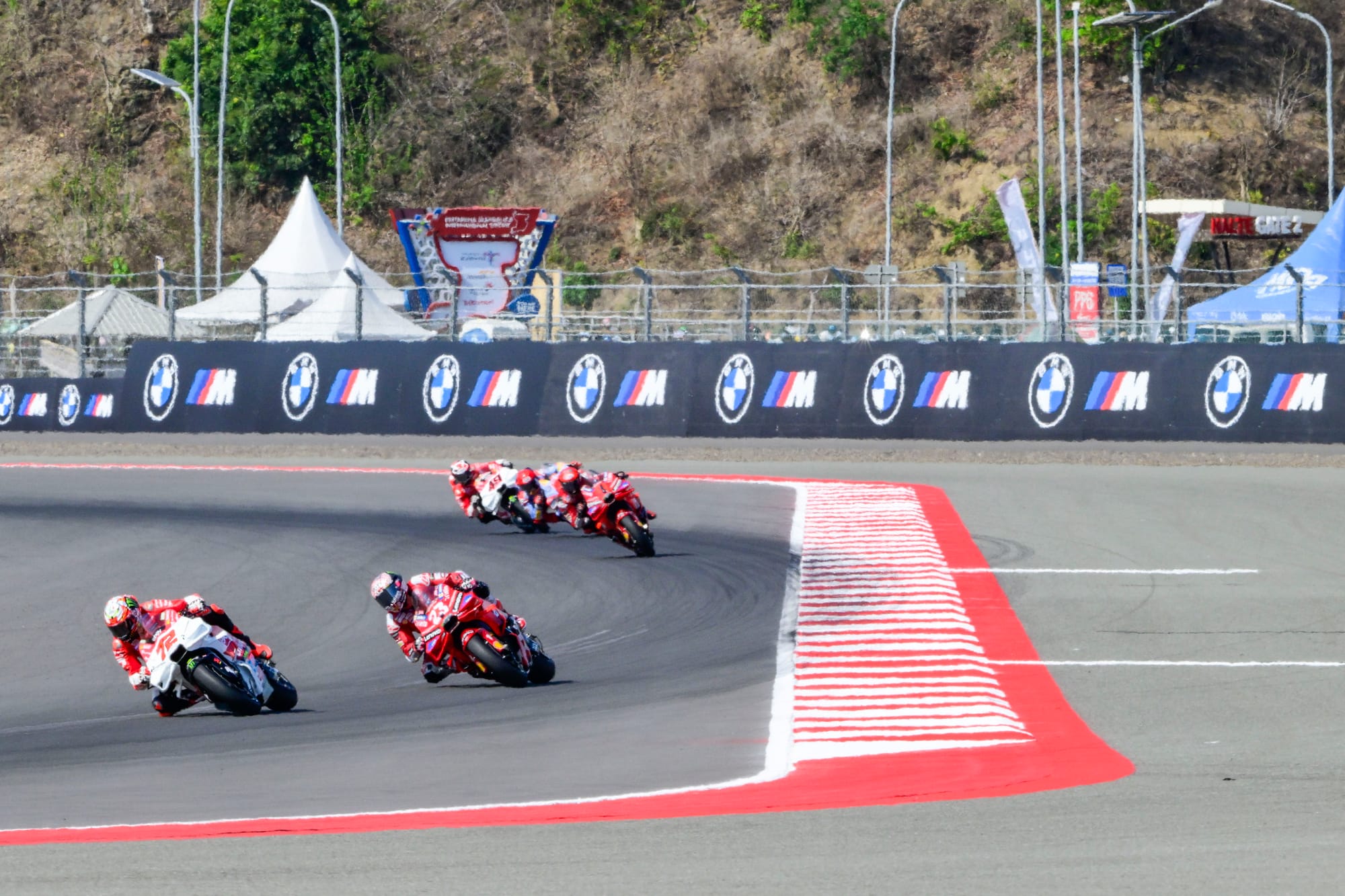
"They turn so well, they don't need traction in the rear. They are able to carry corner speed, carry entry speed, and they are smooth with gas."
Michelin's revised-for-2024 rear tyre appears to have been a key factor in all the performance trends defining how the season has gone, and for Bezzecchi in particular that excess of rear grip has been catastrophic on corner entry - forcing understeer and sapping him of confidence.
Almost all other riders on the grid have mentioned it as an issue at some point in 2024, including the GP24 riders, but Bezzecchi has maintained it is particularly limiting on the GP23 - something corroborated by the elder Marquez, who attributed his ongoing qualifying struggles to exactly that: the rear tyre at its peak grip pushing the front.
"Our bike has more grip in angle," continued Bezzecchi. "It's good - but for turning and for stopping it's very bad.
"We are struggling. All the '23 Ducati riders complain about the same problem. There are some tracks where I was able to adjust a bit, some tracks where I struggled a bit more. But overall the characteristic is this."
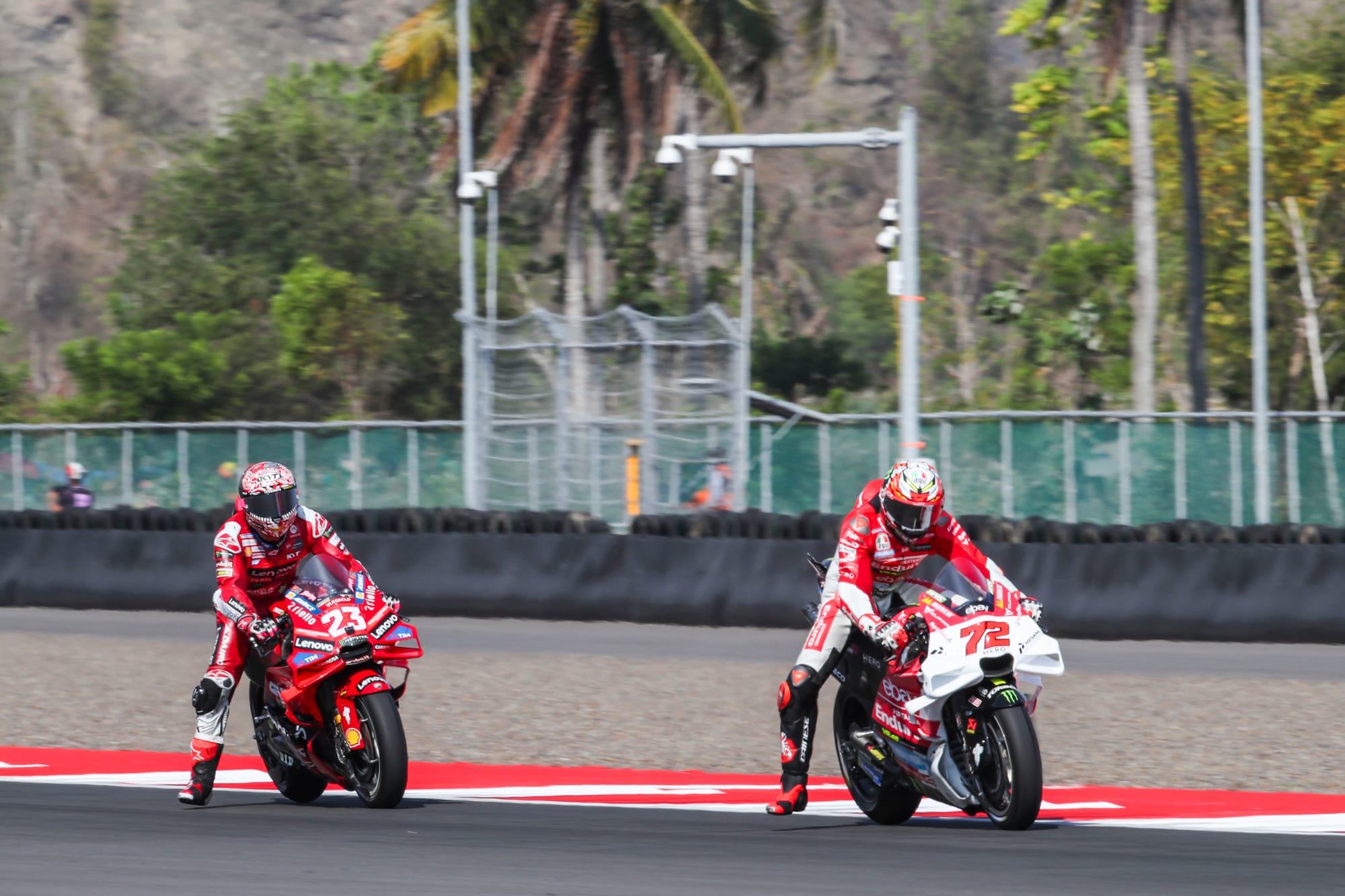
At many tracks, any acceleration mismatch in favour of the GP23 is also negated by the fact the newer Ducatis have an improved ride height device, offering effectively 'free' laptime.
Mandalika isn't a layout where that would obviously confer, but the GP24s - though more vulnerable than usual, as evidenced by Pedro Acosta keeping Martin honest in the grand prix with his KTM/Gas Gas RC16 - still prevailed in the end, helped by a weekend of clear weather that allowed grip to build up and the fact GP23 standard-bearer Marc Marquez clearly doesn't list Mandalika as one of his better (or even anywhere near above-average) venues.


